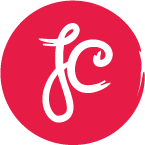Photo by jesse orrico on Unsplash
Health literacy levels vary significantly across the world, presenting a global challenge. Poor health literacy has far-reaching consequences, affecting individuals’ ability to access, comprehend, and act upon health information effectively. Addressing these disparities is crucial, especially given the variations observed among countries and regions.
The HLS19 Consortium of the WHO Action Network M-POHL conducted a population survey in Europe to assess health literacy levels. The survey revealed considerable variations among countries. Health literacy was categorized as “inadequate” or “problematic,” combined and defined as “limited” health literacy. The range for “limited” health literacy was 25%–72%. In other words, between one in four and three out of four residents in participating countries have limited general health literacy1.
Effective communication for improved health literacy
To improve health literacy, information must be conveyed in a manner that engages target audiences. Accessibility, comprehensibility, and actionability are essential. Effective content creation involves understanding key messages, identifying target audiences, and tailoring communication preferences. The Clear Communication initiative of the US National Institutes of Health promotes plain language in health communication, avoiding complex medical terminology and providing explanations and examples for better comprehension.
Readability assessment tools
Healthcare professionals and content creators can utilize readability assessment tools to gauge the understandability of health information. By actively using these resources, organizations can make informed decisions about the effectiveness of health communication. Raising awareness about these tools ensures that health content is clear, concise, and tailored to varying levels of health literacy.
Empowering patients through digital tools
Patient education plays a crucial role in improving health outcomes. Digital communication tools, such as mobile apps, empower patients by enhancing their knowledge and understanding of their conditions. For instance, a study demonstrated that a mobile app significantly improved patient engagement2.
Awareness campaigns
Raising awareness about health literacy is essential for empowering individuals to make informed decisions about their well-being. Public health campaigns play a crucial role in disseminating information and promoting health literacy. These campaigns can take various forms, such as television and radio advertisements, social media campaigns, community workshops, and informational brochures. By emphasizing the importance of clear communication, plain language, and understanding health information, these initiatives encourage individuals to actively seek out reliable sources and engage with healthcare providers effectively. Collaborations between government agencies, healthcare organizations, and community groups can amplify the impact of such campaigns, ensuring that health literacy becomes a priority for all.
Integration in education systems
To create a lasting impact, health literacy should be integrated into formal education systems. Starting from primary schools, students should receive age-appropriate health education that covers topics like nutrition, preventive care, and understanding medical terminology. Teachers can incorporate health literacy principles into existing subjects, emphasizing critical thinking, evaluating health information, and effective communication. Additionally, medical and nursing schools should prioritize health literacy training for future healthcare professionals. By embedding health literacy education at various educational levels, we equip individuals with the necessary skills to navigate the complexities of healthcare, leading to better health outcomes for all.
References:
- Fitzpatrick PJ. (2023). Improving health literacy using the power of digital communications to achieve better health outcomes for patients and practitioners. Frontiers in Digital Health, 5, 1264780. doi: 10.3389/fdgth.2023.1264780.
- Greenwell, K., et al. (2023). Mobile app effectiveness in patient education. Frontiers in Digital Health, 5, 1264780. doi: 10.3389/fdgth.2023.1264780.





